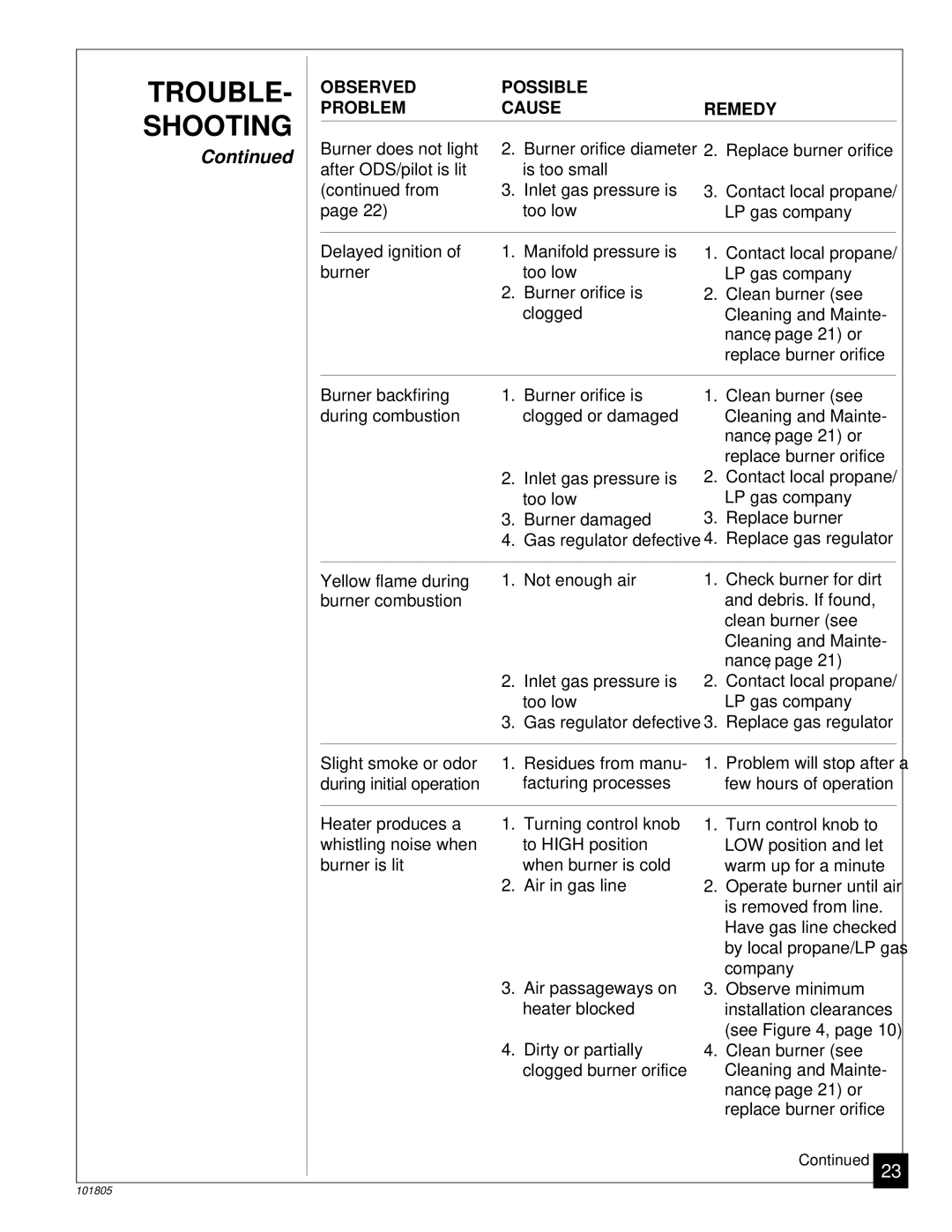RP30C, CGP18C specifications
Desa RP30C and CGP18C are two innovative models in the range of residential heat and air solutions designed to enhance home comfort while promoting energy efficiency. Both units stand out due to their advanced features, reliable technology, and user-friendly characteristics.The Desa RP30C is a powerful, high-efficiency propane heater that delivers exceptional warmth and comfort. It is designed for spaces up to 1,000 square feet, making it suitable for various applications, including homes, workshops, and garages. This heater operates quietly and has an adjustable thermostat that allows users to maintain their desired temperature easily. The RP30C features a durable construction, with a robust chassis and a sleek design that integrates well into different settings.
One of the main highlights of the RP30C is its safety features, which include an automatic shut-off mechanism in case of overheating, ensuring user peace of mind. Additionally, it utilizes a catalytic combustion process that not only maximizes heat production but also minimizes pollutant emissions, making it an environmentally responsible choice.
On the other hand, the CGP18C is a portable gas-powered generator designed for convenience and reliability during power outages or outdoor activities. With an 18,000-watt peak output, this generator can power multiple appliances efficiently. It is built to withstand various environmental conditions, featuring a weather-resistant casing and solid wheels for easy mobility.
The CGP18C employs advanced inverter technology that ensures clean and stable power, making it safe for sensitive devices such as computers and medical equipment. Its user-friendly control panel simplifies operation, while a built-in fuel gauge allows users to monitor their remaining fuel levels effectively. Moreover, the generator is equipped with multiple outlet options, accommodating various plug types to meet diverse power needs.
Both the Desa RP30C and CGP18C exemplify modern engineering, combining functionality, efficiency, and ease of use. They are ideal for anyone seeking effective heating solutions or dependable power generation, making them essential additions for home and outdoor use. With these products, users can enjoy enhanced comfort and reliability in their daily lives.
